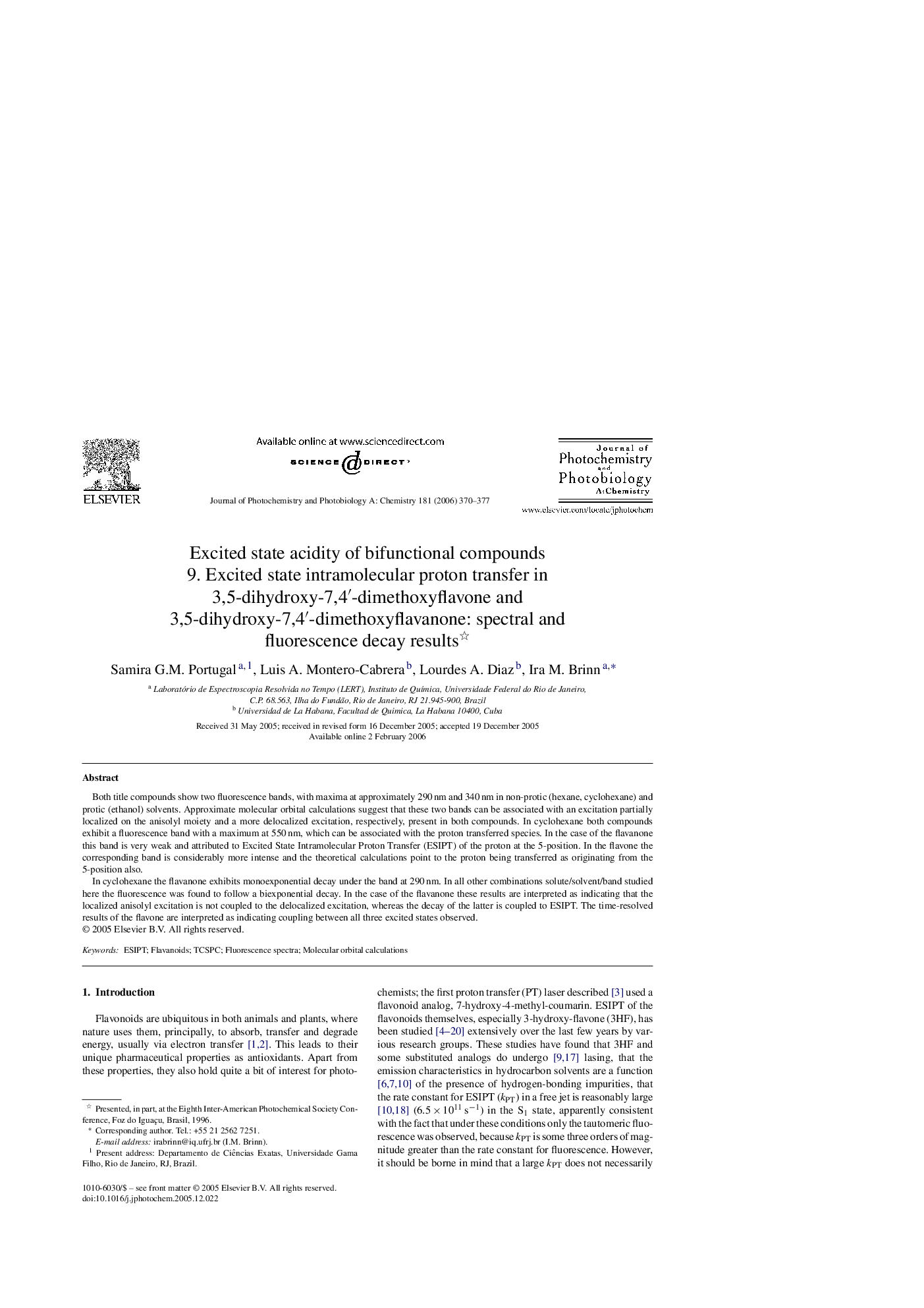| Article ID | Journal | Published Year | Pages | File Type |
|---|---|---|---|---|
| 28556 | Journal of Photochemistry and Photobiology A: Chemistry | 2006 | 8 Pages |
Both title compounds show two fluorescence bands, with maxima at approximately 290 nm and 340 nm in non-protic (hexane, cyclohexane) and protic (ethanol) solvents. Approximate molecular orbital calculations suggest that these two bands can be associated with an excitation partially localized on the anisolyl moiety and a more delocalized excitation, respectively, present in both compounds. In cyclohexane both compounds exhibit a fluorescence band with a maximum at 550 nm, which can be associated with the proton transferred species. In the case of the flavanone this band is very weak and attributed to Excited State Intramolecular Proton Transfer (ESIPT) of the proton at the 5-position. In the flavone the corresponding band is considerably more intense and the theoretical calculations point to the proton being transferred as originating from the 5-position also.In cyclohexane the flavanone exhibits monoexponential decay under the band at 290 nm. In all other combinations solute/solvent/band studied here the fluorescence was found to follow a biexponential decay. In the case of the flavanone these results are interpreted as indicating that the localized anisolyl excitation is not coupled to the delocalized excitation, whereas the decay of the latter is coupled to ESIPT. The time-resolved results of the flavone are interpreted as indicating coupling between all three excited states observed.
